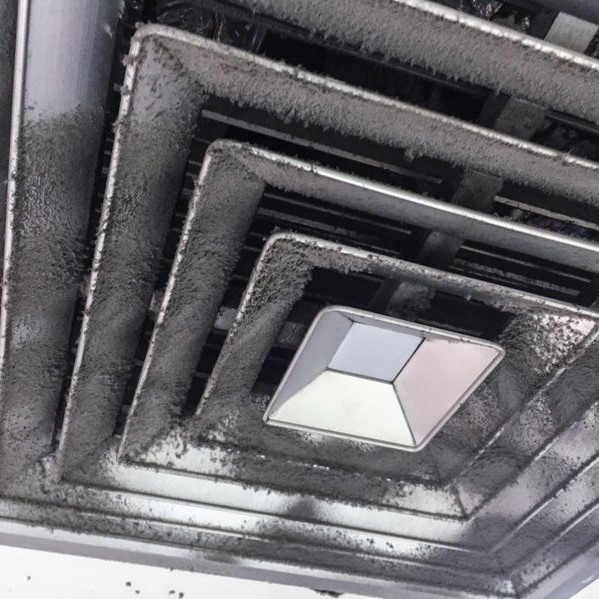
How much does it cost to air seal your home?
Have you installed new windows, added insulation to the attic, and still seem to be losing your warmed air in the winter and cooled air in the summer? You may need to have home air duct sealing done. What is home air sealing?
Home air duct sealing is a methodical method to find air leaking points all throughout your home then sealing those points that are leaking. A home air sealing company will send a team will start in the attic and work down and through the house, checking the exterior walls, into the basement and crawlspace.
You may think your home is airtight and you’re getting the most from your HVAC system at the least amount of money. Request an energy audit from your local power provider and you may find out differently.
One of the largest energy wastes is the air loss in homes, which creates higher energy bills too. Home air duct sealing the leaks found in an energy audit will prevent any more loss while improving the energy efficiency and the HVAC system’s lifespan.
There is a good chance there are air leaks in the walls, around the doors and windows that you may not be aware of, and they are not only letting out cooled or warmed air, but they are also creating moisture problems.
Those moisture problems aren’t letting the HVAC system keep a comfortable temperature in the house, so the thermostat gets adjusted. That moisture build up is also creating health issues for your family and will eventually start causing structural damage to your home.
So, how much does a home air duct sealing job cost? As with anything you have done to your home, there are several “depends” with Home air duct sealing too. Like how many, the location, and the severity of those air leaks on where they are located and how severe they are.
You get a minimum basic for air sealing existing home of 2,500 square foot for as little a $300 up to about $600. If you want a full home air duct sealing project, a 2,500 square foot home will run between $2100 and $5200.
What is the difference in the two different home air duct sealing projects? The more expensive one will include caulking, metal flashing, and weatherstripping where needed. It also includes spray foam insulation. The basic will give you sealing around the primary doors and windows.

Can you diy home air sealing?
Absolutely, but you’ll want to start with a professional home energy audit. Most utility companies are offering free energy audits these days, it is worth scheduling an appointment. Next, following along with what this audit finds so that you know how to air seal a house, take these steps and you’ll save up to 15% off your energy bills once you have completed your own home air duct sealing:
- The Exterior: Any area of your home were two different building materials meet, check for cracks and gaps. This could be where the chimney and siding meet or the foundation and siding, roof, and siding, and around areas where the electrical and plumbing enter the house.
- The Walls: Inside, install foam gaskets behind the exterior electrical outlets and light switches. Use those child-proof plug covers to keep unwanted air coming in around the electrical outlets. Insulate behind the cable and phone receptacles, too, small but the home air duct sealing will do wonders with cold air draft this winter.
No check the baseboards, doors, and windows, for cracks or gaps that air can be getting in (or out). Any wall or window mounted air conditioning units the home air conditioning sealant should be checked too. If your windows are over 20 years old, consider getting new windows. While that is a costly investment upfront, you’re losing as much as 40% of the air right now, that is money going out the door.
- The Basement & Crawlspace: Inspect the rim joists and sill plates and seal any cracks and gaps between them and your home’s foundation. Any holes in the foundation or rim joist where electrical work, HVAC, or hose bibs have been installed should be filled with caulk or spray foam. Same goes for the dryer vent, gas water heater vent and other protruding vents. Check main floor and basement ceiling ductwork, electrical, and plumbing holes and caulk or spray foam them as part of your home air duct sealing project.
- The Attic: Here is where a lot of cooled and warmed air escape! If you’re going to focus on one area, start in the attic. Have your attic inspected by a profession to evaluate the current insulation. If you don’t want to spend that money, then go forth by sealing up any holes in the attic floor and roof. There could be around light fixtures, stacks, and vents, around the chimney and recessed lighting.
This may all seem like a lot of work, so you’re questioning Is air sealing worth it? A home air duct sealing job will provide you the following benefits:
- Consistent temperatures – no more thermostat changes
- Prevention of ice dams
- Improved indoor air quality
- Up to 18% reduction in cooling and heating costs
Need help with your air duct sealing in Fort Worth, TX? Call 817-781-8781 today!

